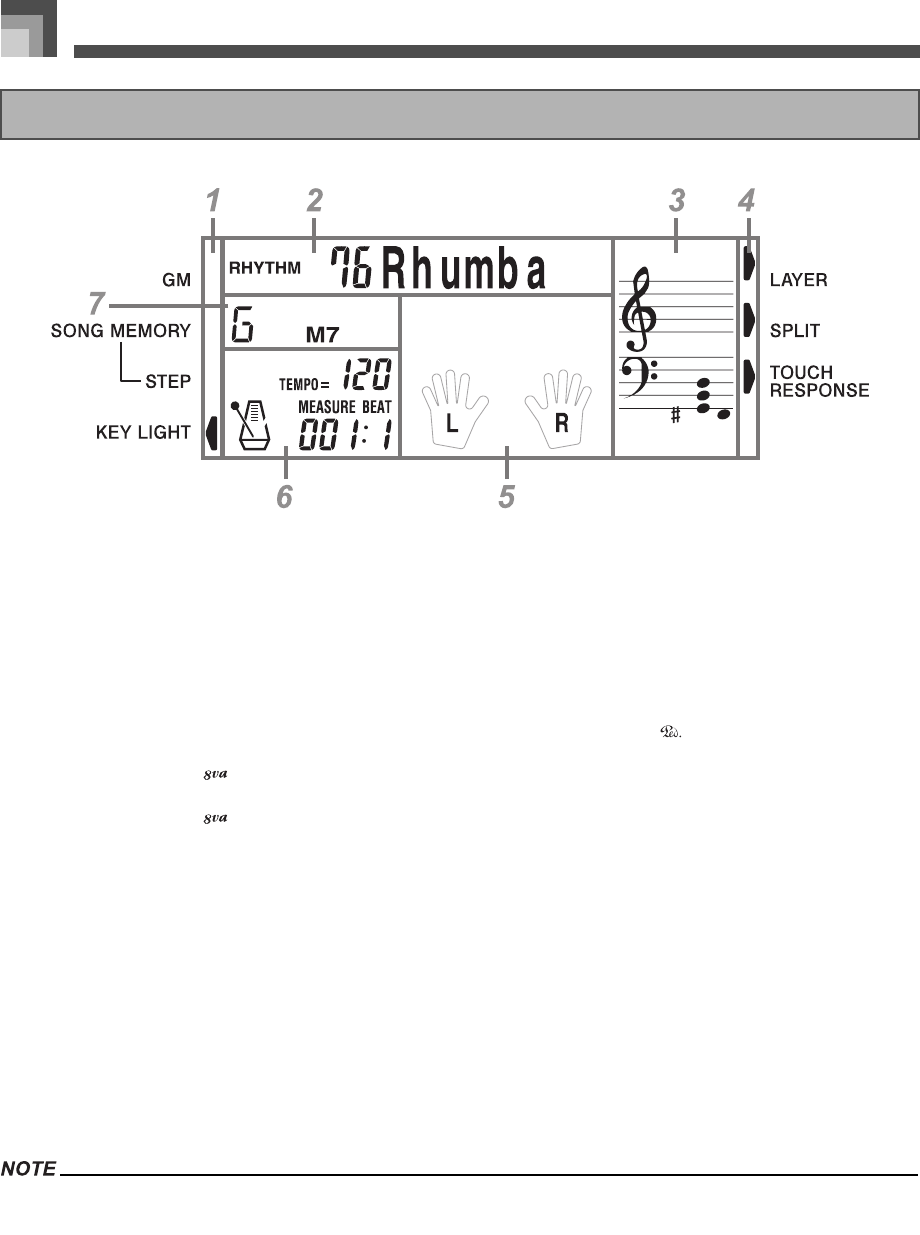
General Guide
E-10
1. An indicator appears next to a function that is in use: GM (General MIDI Mode), SONG MEMORY (Song
Memory), STEP (Step), KEY LIGHT (key light).
2. This area shows tone number and name, rhythm number and name, and tune number and name. It also shows
other information when using the song memory function and other functions. Indicators also appear here to
show what kind of data is displayed: TONE (tone data), RHYTHM (rhythm data), SONG BANK (Song Bank
data).
3. This area is a staff notation display that shows notes being played on the keyboard or from song memory,
chord forms, and MIDI receive data*. If you are using a pedal, a pedal mark ( ) appears here whenever you
press the pedal.
4. An indicator appears next to a function that is in use: LAYER (layer), SPLIT (split), TOUCH RESPONSE (touch
response).
5. This area shows fingerings, dynamic marks, finger crossing techniques, and other finger information during
3-step lesson and Song Bank play. The letters “L” (left) and “R” (right) appear to indicate left and right hand
Auto Accompaniment parts and memory tracks.
6. This area shows measure number, beat number, a graphic metronome, and tempo value (beats per minute)
during rhythm and Auto Accompaniment play, and when using song memory. It also shows the step number
when using the 3-step lesson.
7. This area shows chord names during Auto Accompaniment and Song Bank play.
Display examples shown in this User’s Guide are intended for illustrative purposes only. The actual text and values that appear on the
display may differ from the examples shown in this User’s Guide.
About the Display
[Octave mark ( )] (HIGH)
Appears when the note produced by the keyboard is one octave higher than the note indicated on the staff.
[Octave mark ( )] (LOW)
Appears when the note produced by the keyboard is one octave lower than the note indicated on the staff.
* Received notes outside the range of C1 to C7 do not appear on the display.
641A-E-012A


















